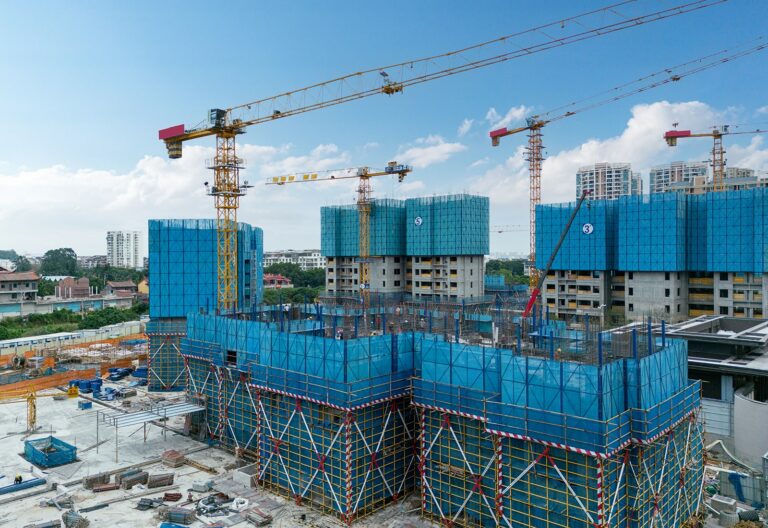The United States didn’t come to be called the land of opportunity for no reason. It was true in the past, and the U.S. is still overflowing with both traditional and new and exciting opportunities. There’s no better way to capture this spirit than coming to America as an investor or business owner. But what are the best EB-5 visa investment options? Is direct investment right for you? Or should you take advantage of the benefits of the EB-5 regional center program?
While only you can make that final decision for yourself, in this article we will lay out all your options so you can make an informed choice. Both avenues can successfully put you where you want to be – a permanent U.S. resident – but each have their own set of risks, challenges, and advantages. Here you can expect an honest breakdown of all the major considerations you’ll need to think through before you decide.
You don’t have to carry the whole burden. Partner with Atlanta Partners Group and lighten the load of your EB-5 journey.
It’s a big decision, but either way it will be an investing adventure. And adventure that gives you and your family access to all that the United States has to offer. Not only that, but as an investor you’re participating on a much deeper level, contributing to the ongoing success that is drawing you to this country in the first place. You will be creating jobs, improving economic conditions, and establishing businesses that will live on and continue to serve, even if you later decide to sell and move on to a different project once your EB-5 visa journey is complete.
Let’s quickly go over what you can expect today. First, we’ll define some of the key terms and get clear on the differences between direct investment and using a regional center. Then we’ll discuss the requirements that all EB-5 projects need to meet to satisfy the USCIS criteria. With that information covered we’ll then be able to do a full deep dive into each approach, covering the types of opportunities available, how to overcome challenges, and tips for a successful investment for both direct and regional center EB-5 projects. Lastly, we’ll talk about what we do here at Atlanta Partners Group and how we are helping immigrant investors just like you achieve their American dreams.
Decoding EB-5 Investment Paths: Direct vs. Regional Center Approaches
What kind of an investor are you? Before you get started on your EB-5 visa journey, you should get clear on the answer to this question. It involves critical decision-making about which path best aligns with your financial goals and residency aspirations. Your risk tolerance, control level desires, and personal business experience are all factors to consider. Both direct investments and regional center investments offer unique advantages and structures tailored to different investor experience levels and needs. Let’s clearly define these terms and understand them better so that you can make an informed choice.
Direct Investment and Regional Center Defined: Unpacking the Basics
When we talk about direct investment in the EB-5 visa world, what does it mean? What is a regional center? How are they similar and how are they different? Let’s answer these critical questions first to get our overall discussion started on solid ground.
What is Direct Investment?
Direct investment in the context of the EB-5 program refers to personally managing and directing the entire EB-5 project. It’s what people generally think of when they say they’re starting a business or becoming a business owner. Direct investment requires the investor to start or directly invest in a business that they will actively manage. If you’re a hands-on type of person who is comfortable taking complete control of a business venture, direct investment could be right for you. These types of investors are comfortable navigating the complexities of establishing and growing a business in the U.S., understanding that the industry, business climate, and laws may be (and probably are) different from in their home country. Direct investors are also responsible for ensuring the business meets all EB-5 visa requirements, including job creation and capital contribution amount. This means that you should ensure you have not just the requisite experience and knowledge, but also the capacity to create a strong and trustworthy team of professionals to assist.
What is a Regional Center Investment?
A “regional center” in the context of the EB-5 Immigrant Investor Program is a service agent organization designated by the United States Citizenship and Immigration Services (USCIS). Authorized regional centers have gone through an approval process by the USCIS and been granted legitimate status as a regional center. Regional centers pool capital from multiple EB-5 investors to fund large projects such as hotels, apartment buildings, and shopping centers. Regional centers focus on specific geographic areas within the United States, aiming to promote economic growth through job creation and capital investment by foreign investors. Regional center investments offer a more passive way of investing, requiring much less direct effort from the individual investor. Regional centers tend to be attractive for investors who have less business experience or choose to use their experience in a different way. They also allow investors to contribute the minimum capital requirement compared to fully shouldering the full burden of an EB-5 project cost, which may be much more than $800,000 or $1,050,000 for a direct investment project. (We’ll discuss more about these dollar amounts later.) Regional centers manage the entire process, from ensuring legal compliance to meeting job creation quotas, often through both direct and indirect employment.
Structural Differences
The primary structural difference between direct and regional center investments is found in the management and operational involvement. Direct investment is not for the inexperienced or uncertain investor. It demands comprehensive involvement, from daily operations to strategic decision-making. In contrast, regional center opportunities provide a hands-off approach where the investor’s role is more about capital contribution rather than active management. This is why it is key to understand what kind of an investor you are. Does the lighter management burden appeal to you? Or do you love to be in the mix?
Another significant structural difference is that direct investments require the investor to demonstrate that the new commercial enterprise directly employs at least 10 full-time U.S. workers. This means employees on the payroll. This direct link between the investment and job creation provides clear traceability but adds a layer of responsibility to the investor. However, regional centers are unique in that they can count indirect and induced jobs towards the job creation requirement (employees not directly on the payroll but jobs created by third parties because of the project itself). Again, we’ll dig into job creation a little deeper further on.
Weighing Initial Considerations: Cost, Complexity, Control, and Timelines
Whether you ultimately decide on a direct investment or a regional center EB-5 project, you should be familiar with the financial commitment, the ins and outs of the EB-5 visa paperwork process, what you can and cannot control, and what kind of a timeline to expect. Let’s review these factors next.
Cost Implications
For the direct investor, the financial pressure is on. You’re not only on the hook for the initial capital requirement that meets the USCIS minimum, but also for on ongoing operational costs. This includes expected – and unexpected – capital expenditures, setbacks, and regulatory expenses. Direct investors should be prepared financially and mentally for the full financial responsibility of running a business. For the regional center investor, you should expect a fixed initial investment amount, with the center managing all operational and additional unexpected costs. If the project requires additional funds due to market dynamics or unexpected challenges, the center has the capacity to raise additional capital without requiring more cash from existing investors. This creates a more predictable financial commitment, which many investors find refreshing.
Complexity of the Investment
While any investment project requires some level of attention to detail, those who pursue a direct investment should definitely ensure that they can handle the minutia. By their very nature, direct investments inherently carry more complexity as they require the investor to establish and maintain a business that complies with all EB-5 visa program regulations as well as being able to stay afloat financially as a business. This includes detailed oversight of job creation and the business’s financial health. Other investors prefer to engage in careful risk management, spreading out the responsibility and engaging in strategic partnerships to do so. Regional centers simplify the investment process by handling the lion’s share of these EB-5 project complexities. They provide a structured approach where they manage compliance with USCIS regulations, reducing the bureaucratic burden on the investor.
Control Over the Investment
Control is a significant factor in choosing between direct and regional center investments. Many business owners find that they love the thrill of being in charge and enjoy being the overseer of all the details. Direct investment offers investors complete control over their business decisions, providing the freedom to steer the business according to their strategic vision. However, along with this control comes the intense responsibility of ensuring the business’s success and compliance with EB-5 visa program criteria. On the flip side, regional center investors delegate direct control of the EB-5 project for a more hands-off approach, relying on experienced professionals to manage the project and ensure it meets all necessary guidelines. For this reason, it’s essential that regional center investors pour their due diligence into choosing the very best regional center with a track record of project success.
Timeline Considerations
While there are certain USCIS requirements for project completion, the timelines for achieving permanent residency can also vary between these two options. Direct investments may face delays if the business takes longer to meet the job creation requirements or if it struggles financially with changing market conditions or other types of setbacks. Regional centers, often involved in larger projects with significant economic impact, may offer a faster route to fulfilling investment conditions due to streamlined processes and professional management. Again, your personal risk tolerance, timeline, and goals should determine whether you choose a direct investment project or a regional center one.
Aligning Investment Choices with Personal Goals
While understanding the key differences between direct and regional center EB-5 investments is crucial, make sure to align these options with your personal financial goals and lifestyle aspirations is just as important. Every investor’s situation is unique, and as an EB-5 investor, so is yours. It is shaped by your financial circumstances, risk tolerance, immigration objectives, and long-term residency plans. The choice between the two EB-5 visa paths is both a head and a heart decision.
If you’re an investor who craves a more engaged role in your investment and possess a keen understanding of business operations, direct investment offers the opportunity to influence outcomes directly and potentially reap higher returns. It allows you to be as practical or as visionary as you choose. This route is best for individuals who are familiar with the U.S. market or those who have specific business ventures in mind that align with their professional expertise. If you believe that no one can do it better than you, direct investment may be calling your name.
On the other hand, not everyone who dreams of permanent U.S. residency has those types of aspirations or the required business acumen. For these investors, regional center investments are a more practical choice. They’re ideal for investors who prioritize a hands-off approach, allowing professionals who have done this before to manage the intricacies of the project while they focus on their personal or professional lives. This option is particularly appealing to those who wish to minimize their day-to-day involvement without sacrificing the potential for a successful immigration outcome. For you, regional centers offer a smoother, more predictable path to a green card.
Ultimately, choosing the right EB-5 investment path isn’t something someone else can dictate for you. This decision should involve careful consideration of how each option fits with both your immediate financial needs and long-term goals. A clear understanding of these differences helps ensure that your project not only leads to U.S. residency but is also in alignment with the overall plan for you and your family.
Curious about your EB-5 investment options?
find the right project for you.
Common Cores: USCIS Requirements for All EB-5 Investments
As you’re probably already aware, the United States Citizenship and Immigration Services (USCIS) sets the parameters for all EB-5 visa projects. Regardless of the path chosen—direct investment or through a regional center—there are universal requirements that all EB-5 projects must meet. This section will cover the fundamental criteria, giving you a clear understanding of what is needed to make your journey toward U.S. residency successful.
Core Pillars of EB-5 Compliance: Meeting Universal USCIS Standards
The EB-5 visa program is an excellent way for immigrant investors to achieve permanent residency. But this program isn’t just about encouraging new immigrants to come to America. It’s also about growing the American economy and creating jobs for American workers. No matter which state your project is in, both direct and regional center investments are bound by a common framework of USCIS mandates designed to ensure that the EB-5 program stimulates the U.S. economy through foreign investment and also results in job creation in order to achieve USCIS approval. Here are the critical requirements that all EB-5 investors must satisfy:
Minimum Investment Amounts
The EB-5 visa program isn’t for casual investors. Program participants are required to contribute a substantial amount of capital to qualify. As of the latest guidelines (which are in place until the next update in January of 2027) the standard minimum investment is $1,050,000. However, for projects located in Targeted Employment Areas (TEAs)—either rural areas or those with high unemployment rates—the minimum requirement is reduced to $800,000. This incentive is designed to channel investments into areas that need economic stimulation the most, and it appears to have been quite effective. If you’re looking to take advantage of the $800,000 minimum for TEA projects, you’ll want to do a lot of due diligence to ensure that your chosen location meets the requirements. Alternatively, you can invest with a regional center that specializes in TEA projects like APG.
Job Creation
You’ve probably heard a lot about the EB-5 visa program requirement for job creation. Every EB-5 investment – no matter which state the project is located in – must create or preserve at least 10 full-time jobs for qualifying U.S. workers. The jobs must be in place within two years of your admission to the United States as a conditional permanent resident. Also, these jobs must be direct and permanent roles if the venture is in a new commercial enterprise not associated with a regional center. In other words, if you’re a direct investor those jobs need to be on your direct payroll as permanent jobs – not temporary, contract, or indirect employment. Now for the twist: regional centers have a distinct advantage in the job creation department. Regional centers can also include indirect and induced jobs, which allows for a more liberal interpretation and fulfillment of this requirement. This is done through economic models that predict job growth as a result of the investment, demonstrating new jobs that were created because of the project even if they are not directly on the business’s payroll.
At-Risk Requirement
The capital you invest as part of the EB5 program must remain “at risk” throughout your conditional residency period. This is to ensure that the investor is genuinely contributing to the U.S. economy and means that the investment cannot be merely a loan or an arrangement involving guaranteed returns or redemption. It also means that loans for the investment cannot use the EB-5 project assets as collateral. The “at risk” nature ensures that there is a genuine risk of loss and a chance for gain, which demonstrates the investor’s commitment to the economic venture. However, this does not mean that secured loans can’t be used to secure funds; they can, as long as the assets are personally owned by the investor and are not the EB-5 project assets. For a deep dive into this topic, check out our article about EB-5 financing for real estate.
To state it simply, understanding and meeting all of these requirements is non-negotiable for achieving success in the EB-5 visa program. Each investor must not only secure substantial capital but also ensure that their investment actively contributes to the U.S. economy through new job opportunities to ensure approval. With that in mind, let’s switch gears for a bit and talk about the less exciting but absolutely essential paperwork aspect of the EB-5 program: USCIS forms.
Streamlining Success: The EB-5 Application Process
The EB-5 visa application process is a lengthy but valuable journey that requires careful planning and precision. Again, the filing of all these forms is required, regardless of whether you choose a direct or a regional center approach and no matter which state your project is located in. Understanding the application steps and EB5 visa processing time is vital to navigating this pathway efficiently and effectively, so let’s get into it.
Initial Petition – Form I-526
The journey begins with the Form I-526, Immigrant Petition by Alien Investor. This form is the first step where the investor must demonstrate that their planned project meets all the EB-5 requirements, such as the minimum EB5 investment amount and the job creation criteria. Regional center investors will likely have an easier time of it when it comes to documentation, as they’ve already done the legwork, analysis, and have paperwork ready to submit with your forms. Your petition should also provide detailed evidence that the funds have been invested or are actively in the process of being invested in a new commercial enterprise and has originated from a lawful source. For regional center investors, it must also show that the investment is likely to result in the required number of direct, indirect, or induced jobs – something approved centers like Atlanta Partners Group will be happy to help you provide.
Adjustment of Status or Consular Processing
Once your I-526 petition is approved, if you are already in the United States, you can then apply for an adjustment of status to conditional permanent resident via Form I-485. Alternatively, if you’re outside the U.S., the process involves consular processing at a U.S. embassy or consulate. This step culminates in the issuance of a conditional Green Card, which allows the investor and their immediate family members to reside in the United States while their project is underway.
Removal of Conditions – Form I-829
Approximately 90 days before the second anniversary of receiving conditional permanent residency, you must file the Form I-829, Petition by Entrepreneur to Remove Conditions. This form requires proof that you have fulfilled all the requirements of the EB-5 visa program, including maintaining the investment and creating the required jobs. Approval of this form is an exciting event, so be ready to celebrate! Successful approval of this form results in the investor and their family members receiving permanent Green Cards.
As we mentioned earlier, any investor needs a healthy level of attention to detail, and the USCIS form filings are no exception. Thorough preparation and understanding of each step of this process are crucial. Mistakes or oversights can lead to costly delays or denials, putting your entire investment – and immigration dreams – at risk. Both direct investors and those partnering with regional center projects must diligently prepare their documentation and adhere closely to USCIS timelines and requirements, ensuring that every step is meticulously planned and executed on time and with all necessary documentation.

EB-5 Compliance: The Keys to Your American Dream
The stringent requirements set forth by the USCIS for EB-5 investments are designed to ensure that foreign investments meaningfully contribute to the U.S. economy while at the same time providing a legitimate path to residency for immigrant investors. They may be strict, but they are your keys to success. Understanding and adhering to these requirements is paramount for the success of the EB-5 visa process and achieving permanent residency for you and your family in the United States.
Keep in mind that direct investors bear the full responsibility of their investment’s success, from selecting and managing their EB-5 project to ensuring it meets all job creation and capital investment requirements. This path is for the most diligent and well-resourced immigrants. It demands a high level of involvement and an understanding of complex regulatory details, placing the onus on the shoulders of the investor to navigate EB-5 compliance successfully.
The regional center program gives hope to many investors who may not have the impressive network or business skillset of others. Regional center investors benefit from partnering with experienced professionals who are well-versed in handling the nuances of EB-5 projects. These centers are a bridge between the investor and the USCIS, providing a structured framework that supports the investor through each step of the process. If you’re looking for a more streamlined and straightforward pathway to residency, consider partnering with a regional center like APG. By managing the project and ensuring compliance with all USCIS requirements as mission-critical aspects of each project, regional centers lighten the load on the individual investor and – for many – increase the likelihood of a successful outcome: final approval and a U.S. green card.
Become part of a successful community of investors.
Mastering Direct Investment in the EB-5 Arena
Direct investment under the EB-5 program offers investors an adventure that is not for the faint of heart. It is the opportunity to take the helm of their entrepreneurial venture, directly influencing both the project’s success and their path to U.S. residency. Direct investment requires that investors to not only initiate and manage a business but also make sure it aligns with the stringent criteria set by USCIS, including job creation and capital investment requirements. This hands-on approach appeals to those who have clear business visions and are comfortable facing the challenges of the U.S. business environment.
Choosing the Right Sector: Key Industries for Direct EB-5 Investments
What’s your specialty? Selecting the appropriate sector and business model is crucial for the success of a direct EB-5 investment, but it should also align well with your personal experience and values. The viability of the business, its ability to meet job creation requirements, and its sustainability in the competitive U.S. market are, of course, your considerations. However, you’ll also want to consider what additional value you bring to the venture. In other words, what is your competitive advantage and market differentiators that will contribute to its success? Historically, certain sectors have proven particularly conducive to fulfilling EB-5 criteria, primarily due to their capacity for job creation and economic impact. Let’s review some of them and see which, if any, is best suited for your personal situation.
Real Estate and Construction
One of the most popular sectors for EB-5 investment opportunities, real estate involves projects that can range from new residential developments to large commercial complexes. Construction projects generally create numerous jobs and also contribute significantly to local economies due to the large amount of funds required even for smaller projects, leading to the satisfaction of USCIS approval requirements. The tangible nature of real estate development provides a clear pathway to fulfilling the job creation requirement, with each phase of construction and subsequent operations generating new employment opportunities. There are a few caveats here, though, that you won’t want to get tripped up on. We’ll discuss those in the next section.
Hospitality and Tourism
The hospitality sector is also a top choice among direct investors. Hotels, resorts, and recreational facilities offer a lot of opportunities for EB-5 investments all across the United States. These businesses typically require a large staff to operate, effectively addressing the job creation criterion. Hospitality projects often become community hubs, adding to their appeal as establishments that bolster local economies and attract further development. This can make navigating local zoning and politics a little more forgiving.
Healthcare
Do you have a heart for helping? Investments in healthcare facilities, such as clinics, hospitals, and specialized care centers like rest homes, may be attractive for you. These types of projects respond to critical community needs and generate a substantial number of jobs. The healthcare industry is less susceptible to economic downturns, providing a more stable foundation. EB-5 projects in this sector not only meet the direct job creation requirements but also serve a significant social purpose by contributing to the public welfare.
Manufacturing and Production
Where do you see the manufacturing future in the United States heading? If you believe the U.S. will be pulling out of less stable countries and pulling factories back home, this sector may be just right for your EB-5 visa project. Manufacturing plants and production facilities often bring many jobs to local communities, especially those in TEA areas which qualify for the reduced capital contribution amount. They directly impacting the local economy and easily meeting the EB-5 program’s employment stipulations.
Technology Startups
Do you have a strong background in tech and a visionary idea that could change the future? While typically riskier due to the high competitiveness and innovation-driven nature of the tech industry, startups can be a lucrative area for EB-5 investments if positioned correctly. Technology companies with scalable models can generate significant employment as they grow, but investors must be cautious in selecting ventures with strong market potential and solid business models. Keep in mind that employees of tech firms generally command higher salaries, which can put strain on the budget.
Crafting Success: Strategic Insights for Direct EB-5 Investors
EB-5 visa program direct investors need a blend of astute planning, industry knowledge, and strategic foresight. Here are some practical tips and strategies that can help position your investments for success.
Comprehensive Business Planning
Like any business venture, success in the EB-5 program begins with a well thought out business plan. But unlike regular business projects, your EB5 visa project must not only meet USCIS requirements but also be able to survive in the competitive U.S. market. A detailed plan should include clear financial projections, a credible marketing strategy, and a solid operational framework. For instance, if you’re considering a boutique hotel in a TEA, your business plan should fully detail the construction timeline, job creation forecasts, and strategies for attracting tourism.
Market Analysis and Location Choice
Direct investors should learn to make location, location, location their mantra. Choosing the right location and understanding the local market are critical. Thorough market research needs to be conducted at the deepest levels to ensure the selected industry has growth potential not just in general, but specifically in the chosen area. Make sure you have local experts on your team to help you analyze and understand the dynamics of your target area. Speaking of local experts…
Leverage Local Expertise
Building relationships with local business leaders, industry experts, and legal advisors can provide invaluable insights and critical on-the-ground support. These connections can help you map out and survive local regulations, understand market nuances, and anticipate potential challenges. No one can help you quite like someone who knows the area in and out and is also familiar with the business climate.
Overcoming Obstacles: Challenges in Direct EB-5 Investments
Investing directly in an EB-5 project brings a unique set of challenges that cannot be overstated. Being well-prepared to face and overcome these hurdles is crucial for ensuring the success of your investments and the achievement of your residency goals. Here are some of the key challenges investors face and strategies to effectively manage them.
Regulatory Compliance and Your Budget
One of the primary challenges in direct EB-5 investments is ensuring adherence to USCIS regulations, especially regarding job creation and capital investment. It can be a real challenge to both meet the requirement for ten jobs and still stay within your budget. Oftentimes investors find that their project will cost, for example, $1.2 million but only create six or seven full time jobs. Or on the other hand, it may create thirty or forty jobs but cost many millions to build and pay for salaries, which can be hard on an individual. If the project fails to create the required jobs within the stipulated time, it will jeopardize your EB5 visa application. To mitigate this risk, continuous monitoring and adaptation of the business plan are essential. Engaging with immigration attorneys and consultants who specialize in EB-5 can provide ongoing guidance and help preempt compliance issues. You may also consider bringing in a partner (or two or three) rather than going it alone. (More on that later.)
Financial Sustainability
Once certain that the project will meet EB-5 criteria, direct investors also need that business to remain financially viable which is a challenge all its own. Economic shifts, unexpected market conditions, or poor financial management can lead to business failure. To counter these risks, it’s advisable to have contingency plans and reserve funds, as well as a strong team of skilled advisors. Regular financial audits and adopting conservative budgeting practices can also safeguard the business against unforeseen financial pressures. We will again state the importance of planning, knowing your market, and having a knowledgeable team.
Cultural and Market Adaptation
For many EB-5 investors, the cultural and business landscape in the U.S. can prove daunting. Misunderstandings arising from cultural differences can impact business operations and client relationships, creating unnecessary conflict. Don’t let this happen to you. By seeking local partnerships and hiring management from the local area, you can bridge cultural divides and integrate business practices acceptable to the U.S. market. Getting an EB5 mentor who has also gone through the assimilation process will also prove valuable to your journey in many ways.
Partnership Problems

For investors who have identified the need for and secured partnerships for project success, they’ve successfully spread out the risk of the new venture. However, partnerships bring on complications and complexities all on their own. If your partners are also EB-5 investors, ensure that the project supports all of your USCIS requirement needs. Get a highly qualified attorney to review the business agreements and ensure all of you have the same goals and that expectations from each other are clear. In the event of conflict between partners, determine ahead of time how those disputes will be settled. With the right contracts and plans in place, partnership problems can be headed off in advance.
EB5 direct investors face a balancing act that covers every aspect of traditional business and government requirements and paperwork. Despite these challenges, many investors have successfully charted their course and sailed into the harbor of the EB-5 visa green card. However, if you’ve been reading through the risks and challenges and have begun to suspect that they are more than you’re ready to take on, you’re not alone. There is another way. Most immigrant investors today are taking a less rocky path toward residency through the regional center project opportunity.
Regional centers can reduce your EB-5 risk and lighten your workload. Learn more today by contacting APG.
Regional Center Investments: A Gateway to Streamlined EB-5 Success
The regional center program through the USCIS has been a breath of fresh air to immigration-seeking investors who don’t want or have the necessary skills to actively manage a business in the States. Through a regional center, you can benefit from the expertise of others who have been there, done that. In other words, you don’t need to bring the ultimate in business or real estate experience to the table – they’ve got it covered. As we mentioned earlier, regional centers are organizations that have received approval from the USCIS to sponsor EB5 projects that specifically attract foreign investments and promote economic growth, primarily through job creation. This route is particularly appealing to the majority of immigrants who prefer a more hands-off approach in their journey toward permanent U.S. residency.
Investors in regional centers contribute to larger EB-5 projects, such as real estate developments or infrastructure initiatives, that have significant economic impact. These regional centers manage the entirety of the project, from the compliance with USCIS regulations to the day-to-day operational responsibilities. As an investor, your primary responsibility lies in providing the capital investment, and of course filing your required forms and documentation with immigration. The regional center handles the rest, including proving job creation. If you recall from the earlier discussion, one of the attractive benefits of regional center projects is that they can include both direct and indirect employment—a major point in their favor.
Exploring Project Diversity in Regional Center Investments
What kind of EB-5 visa projects are available through regional centers? Unlike projects pursued by direct investors, regional center projects don’t necessarily require the passion (or life experience) of the investors. Although it’s still wise to make sure you’re aligned personally with the goals of the project, you won’t need to be waist-deep in the ins and outs of day-to-day operations. Let’s review some of the most popular options and see how they stack up against your personal goals.
Real Estate and Large-Scale Developments
Real estate remains a popular sector – if not the most popular sector – within regional center investments due to its substantial job-creating potential and tangible asset value. Projects in this category are often residential complexes, commercial infrastructures such as shopping centers, and mixed-use developments that combine retail, office, and residential spaces which are growing in popularity in the United States. For example, a regional center might oversee the development of a new residential area that not only provides housing but also creates a multitude of construction and long-term operational jobs.
Infrastructure Projects
Many regional centers also focus on infrastructure projects. This is construction-heavy, involving the construction of roads, bridges, and public transport systems. These EB-5 visa projects are critical for regional development and typically require substantial capital and labor, which is how they often fulfill the EB-5 program’s job creation requirements so effectively. The large-scale nature of these projects makes them ideal for regional center EB-5 projects, providing a more secure investment vehicle that benefits from both government and public interest. Investors should be aware of the potential for delays or complications due to the geographic area of the project and keep those in mind before choosing infrastructure projects.
Hospitality and Tourism
Another strong industry filled with potential for EB5 visa investors is hospitality and tourism. Projects in the hospitality sector generally include hotels, resorts, and tourism complexes. These ventures not only generate a significant number of jobs but also stimulate local economies – especially in TEA areas – by attracting tourists and promoting consumer spending. For instance, a regional center might invest in the development of a new hotel in a designated TEA, enhancing the area’s appeal to tourists and creating various service and management job opportunities. Additionally, while all commercial enterprises have some level of government oversight and compliance requirements, the hospitality sector enjoys comparatively more freedom than other industries, such as healthcare.
Healthcare Facilities
Also making the list of top sectors is healthcare. Investing in the development of healthcare facilities such as hospitals, clinics, and specialized care centers is another area where some regional centers are actively involved. These EB-5 visa projects address critical needs within communities (often in TEAs) and generate a wide range of jobs, from construction to healthcare provision. However, investors should be aware that entering into the healthcare sector brings with it many layers of even more compliance, government oversight, and the high salaries commanded by doctors and nurses. These considerations should definitely be factored in before choosing this path.
By choosing these types of projects through a regional center, investors can tap into ventures that are pre-vetted for compliance with EB-5 criteria. This goes a long way in reducing the risk and complexity involved in the EB5 visa process. Next up, we’ll dig a little deeper into the specific benefits of choosing regional center investments, such as reduced investor management responsibilities and enhanced visa approval.
Investor Responsibilities in Regional Center Projects: Due Diligence and Documentation
While investing through a regional center reduces the complexities associated with project management and compliance, investors still have a number of personal responsibilities. In areas like due diligence, financing, and the completion of essential paperwork, you’re still the responsible party. Let’s take a look at these responsibilities and what they entail so you know what to expect as you move toward the achievement of your immigration and financial objectives.
Conducting Due Diligence
Before committing capital, investors should thoroughly vet the regional center and its projects. This includes assessing the center’s track record, financial stability, and the historical performance of its projects, particularly in terms of job creation and project completion. Taking a close look at past successes and failures helps predict the potential success of current offerings and shows the competency of their management team. Investors should request detailed reports that demonstrate compliance with EB-5 visa regulations, prosperous projects, proformas for current offerings, and successful green card outcomes for previous investors.
Financial Commitments and Structuring
The capital commitment required for EB5 financing – whether through a direct project or a regional center – isn’t just about coming up with the money. You also must ensure that your project aligns with both USCIS requirements and your personal risk tolerance. This involves not only getting your hands on the necessary funds to meet the minimum investment threshold, but also verifying that these funds meet the legal standards for EB-5 investments. Immigration requires documentation proving the lawful source of funds and it must be meticulously prepared. This can include providing evidence of earnings, inheritance, gifts, or any other legal means through which your EB-5 project capital was acquired. Failure to demonstrate a legal paper trail can result in denial of your application and saying goodbye to your green card. It’s that important.
Completing Required USCIS Paperwork
Aside from the financial requirement, regional center investors must also complete the series of USCIS forms accurately and comprehensively. This includes the initial I-526 petition, which establishes your eligibility for the EB-5 visa program based on the planned investment. While the regional center will provide you with documents related to the project and job creation, you are still responsible for compiling and submitting personal documentation that supports their application, such as proof of the lawful source of funds and personal identification documents. You also need to make sure the forms are filed on time and with the proper filing fees all the way up until you’ve got your permanent green card in your hands.
Ongoing Engagement and Oversight
The fact that regional centers manage the day-to-day operations of the EB-5 program projects is one of the major incentives that attracts investors to them. However, wise investors still remain engaged, monitoring the progress of the project and reviewing regular updates. This oversight includes staying informed about the project’s status, understanding any shifts in timelines or objectives, and being proactive in communications with the regional center. Regular updates from the regional center can provide reassurance and clarity, ensuring that the project continues to meet the necessary criteria for successful EB-5 investment.
By fulfilling these responsibilities, you will not only practice common sense due diligence to safeguard your financial interests but also enhance the likelihood of successfully achieving your green card. The next sections will further explore the streamlined process offered by regional centers and how these facilitate compliance and success in the complex landscape of EB-5 visa investments.
Strategic Evaluation: Identifying Quality EB-5 Regional Center Investments
Achieving your immigration goals and enjoying a successful EB-5 vis project means choosing the right regional center and the right project. To that end, we’ll provide practical advice on evaluating potential investments and highlight critical questions that can guide your decision-making process.
Key Questions for EB-5 Regional Centers
Before you partner with a regional center, have a deep and thorough conversation with them, because while all approved centers have been through the USCIS approval process, they are not all created equal. Conduct a thorough evaluation to ensure that your investment will be handled effectively and compliantly and that the project aligns with your personal immigration and financial goals. Here are some questions to consider.
What is the historical performance of the regional center? Inquire about the success rates of previous projects, specifically regarding job creation and I-526 and I-829 petition approvals. If they are a new center, ask about previous projects developed and managed by the current management team.
Does the center offer any kind of guarantees for EB-5 visa investors? Some centers offer guarantees on investment. For example, investors with Atlanta Partners Group can recieve an I-526E denial refund guaranty and a project completion guaranty.
Does the regional center develop projects in TEA areas? Do their EB-5 projects qualify for the USCIS priority processing of I-526E or the 20% set aside program? Yes answers to these questions can lower both your capital commitment and your wait time for a green card.
Can the regional center provide detailed case studies or references? Authentic feedback from previous investors can provide insights into the operational efficiency and integrity of the center.
What are the management qualifications and experience? Get a feel for the background and expertise of those managing the regional center and its projects. How long have they been working on these types of projects? Are past projects still prosperous?
How does the regional center handle project failures or delays? This question will help you understand the risk management measures in place, providing an insight into the center’s preparedness for unexpected scenarios.
What expectations does the regional center have for their current offerings? What are the timelines and what do the proformas look like? How does the center plan to demonstrate the job creation requirements?
Choosing a Strategic Location
The location of your EB-5 project can make or break its success. Choose carefully and consider these factors:
Proximity to Major Markets: EB-5 projects situated near or in major economic hubs tend to have better job creation potential and economic stability. Even rural TEAs located within easy driving distance of major metro areas can benefit from this location.
Alignment with Personal Goals: If possible, choose a project located near where you plan to live in the U.S. Being nearby can provide personal reassurance and ease in monitoring the investment; it’s also nice to be able to see your money at work.
TEA Designation: Projects in Targeted Employment Areas (TEA) not only qualify for a lower investment threshold (among other bonuses) but also often receive governmental support and incentives, improving their chances of success – and yours.
Evaluating Project Viability and Oversight
Don’t get stuck in the minutia and forget about the basics. By this we mean that you should thoroughly assess the project’s business plan and financial projections. Ensure that the plan includes a comprehensive market analysis, realistic financial forecasts, and a clear outline of the job creation strategy. Additionally, confirm that the regional center has sufficient oversight and communication mechanisms to keep investors informed about the project’s progress and any critical issues.
Legal and Compliance Checks
Finally, ensure that the regional center has a strong compliance track record with USCIS regulations. As always, it’s a good practice to consult with your immigration attorney who can review the project’s legal documents and compliance status, providing an additional layer of security for your investment.
For a great many immigrant investors, regional centers have a lot to offer. By providing a clear and reliable path to your green card, these projects can provide a strong foundation for your EB5 journey, especially if you’re not crazy about the idea of running the whole show yourself. When you evaluate potential EB5 regional center projects and ask the right questions, you can make a well-informed decision that maximizes the likelihood of achieving your EB-5 investment and residency goals. This careful approach will help ensure that your chosen project not only leads to permanent residency but also contributes positively to your financial portfolio.
Invest confidently in your future with APG’s EB-5 opportunities.
Partner with Confidence: The Atlanta Partners Group Advantage in EB-5 Investments
As we’ve mentioned before, if a regional center appears on the USCIS list of regional centers, it means that organization has successfully gone through the application and approval process. However, just because a regional center makes the list doesn’t mean it’s necessarily the right one for you. APG, a regional center located in the southeastern United States, offers a comprehensive suite of benefits designed to maximize your investment’s potential and streamline your path to U.S. residency. Our deep commitment to investor success and a proven track record in managing EB-5 projects set us apart as a leading choice for your EB-5 investment. Here’s how we back up our claims.
Project Completion and Denial Refund Guaranty
The stakes are high for your EB-5 investment. That’s why we’ve introduced a Project Completion and Denial Refund Guaranty. These guarantees ensure that not only will the project you invest in be completed, but also that your capital is secure. If your I-526E petition faces a denial due to project-related issues (not personal issues unrelated to project management), we guarantee the return of your invested capital. This commitment provides investors with peace of mind, allowing you to invest with confidence knowing that your interests are protected against unforeseen complications. When you contact APG, ask about these provisions and whether or not they apply to the EB5 projects you’re most interested in.
Specialization in Targeted Employment Areas
Even well-resourced investors are not made of money. That’s why At APG, we specialize in projects located within Targeted Employment Areas (TEA). Our TEA projects qualify for the lower investment threshold of $800,000, compared to the standard $1,050,000. Our rural TEAs can also get you qualified for priority I-526E processing and the 20% visa set-aside program. This specialization not only makes the EB-5 visa program more accessible but also aligns with our strategy to foster economic growth in areas that benefit most from development. By investing in TEA projects, you’ll step into ventures that have enhanced potential for success and community impact, supported by additional government incentives.
Track Record of Success and High ROI
Our history speaks volumes about our capability and reliability. We have a consistent track record of successful projects that not just meet but exceed the EB-5 program’s requirements. And our success doesn’t stop there. We have demonstrated a higher than average EB5 investment return, making our EB-5 projects an attractive option for investors seeking both immigration solutions and strong financial growth. A healthy return, after all, should be the goal of investments of any kind. We take that aspect of our projects seriously, and it shows.
Dedicated Support and Guidance
We are more than just an EB-5 regional center; we are your partner in this journey. Our team of experts provides end-to-end support, guiding you through every step of the EB-5 process. From your initial consultation to the final issuance of your green card, we’re there for you. Answering questions, providing project updates, and delivering documentation to support project requirement fulfillment, you can count on APG.
Discover the Atlanta Partners Group Difference in EB-5 Investments
As you weigh your options between direct investment and regional center investment, remember that no matter which path you choose, you’ll need a team. Whether that’s a regional center or a team you create on your own, the right partners can significantly influence the success of your EB-5 journey. At APG, we specialize in creating opportunities that not only meet approval for USCIS immigration requirements but also offer a solid ROI. With our strong track record in TEA projects, comprehensive project completion guarantees, and unwavering commitment to investor success, we are qualified and ready to help you achieve your American dream.
Contact us today to explore how partnering with Atlanta Partners Group can simplify your path to U.S. residency while still maximizing the potential of your investment. Let’s discuss our current project opportunities and how they can fit your goals. Together, we can turn your aspirations into reality.


















